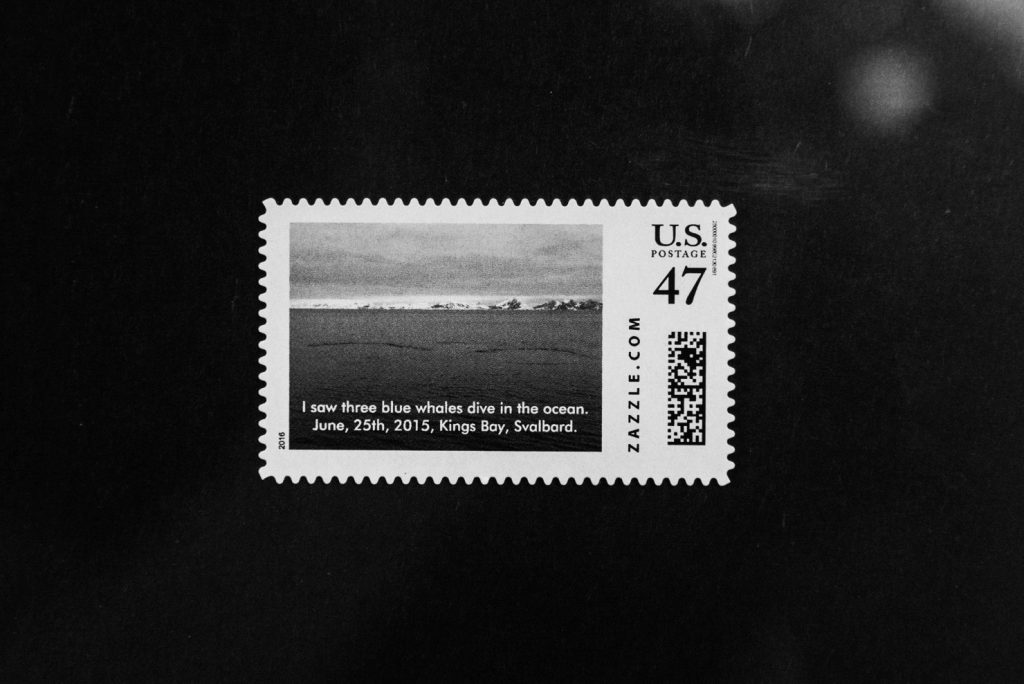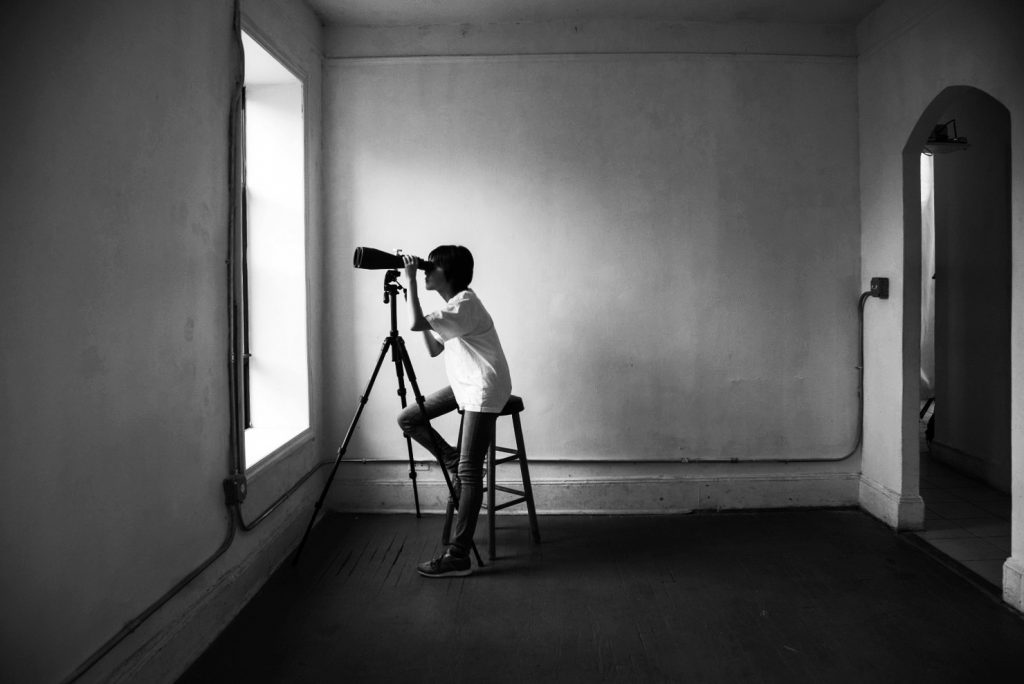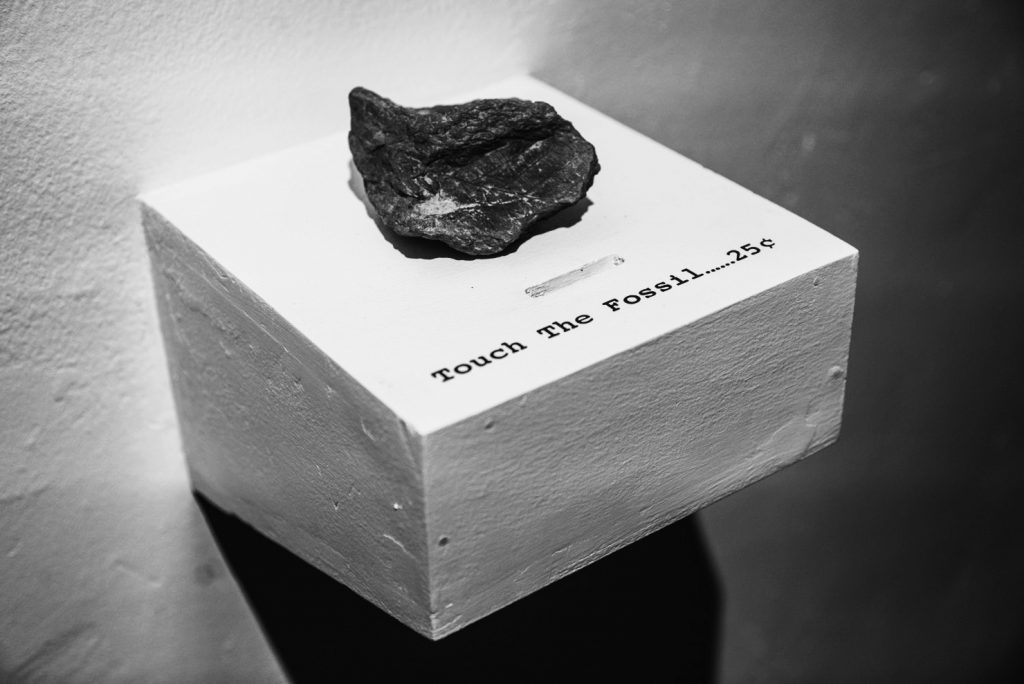Yunyu ( ‘Ayo’ ) Shih: ‘I must, if I may…’
Yunyu ‘Ayo’ Shih: The Seals Are Shedding Their Coats
Practice, Eldridge Street, New York
21.05.16 – 01.06.16
Translated by Daniel Szehin Ho
The artist Yunyu ‘Ayo’ Shih has a sound installation piece for his solo exhibition at Practice an independent space in New York. On the opening day there was a performance; the on-site recording of this was later played throughout the duration of the exhibition. This 18-minute-long sound piece, with a dual narrative, was composed of tales of how, in the 1890s, the American explorer Robert Peary brought a huge meteorite from Greenland to New York, and how six members of the Inuit passed away from diseases ( except for one boy, who survived ), interspliced with the artist’s various experiences in residencies all over the world, including contracting dengue fever in Columbia and being robbed in Sweden while on a journey to the Arctic.
When the narration reached the 15-minute mark, the words ‘I must, if I may’ caught my attention. These were followed by the phrase: ‘to have the genuine experience of the corporeal world…’. The certainty expressed by ‘must’, and the uncertainty implied by ‘may’, contained an inherent contradiction. For the artist, this ‘necessary’, though not necessarily possible, thing is the need to attain real experiences in the material world, as though everything that has happened prior to this has been too much of a trick ( huyou ).
‘Trick’ is, perhaps, not too accurate a description, though Yunyu ‘Ayo’ Shi’s attitude, at least, preserves some doubt. The Seals Are Shedding Their Coats, a work with the same title as the exhibition, is an album of collages that includes images and texts. Based on the navigational diaries of European and American explorers in the Arctic from 1808 to 1912, the artist fabricates a seemingly complete diary that covers a period of six months. The numerous setbacks of the nineteenth-century explorers resonate beyond time and space with the artist’s residency in the Arctic; it feels as if we are reliving the experience of others in front of our very own eyes.
I saw three blue whales dive in the ocean, June 25th, 2015, Kings Bay, Svalbard, as the title suggests, describes the majestic scene of blue whales surfacing and then diving back into the sea. Yet the only image left is a photograph taken on a cell phone: three slivers floating on the surface of the ocean, creating barely a ripple. This majestic sight, disturbing the calm, can scarcely be recreated. Nevertheless, it has been treasured by the artist as an important incident worthy of commemoration – and so he made a postage stamp out of the image.
File Number: 5000–K669841-15 is a photocopy of a document from the Swedish police. After losing all of his photographic and video equipment, when his car was broken into by thieves who smashed the windows to get in, Yunyu ‘Ayo’ Shih kept a record of his report to the local police. Later, he contacted the police by e-mail; he added to the police report of the theft a short text, describing the works he had originally intended to create. This was later returned to the artist in a single folder. These pages of the official file, in Swedish and English, with the admixture of some indecipherable Chinese characters, were pasted onto the walls of the building across the street from Practice. After a spell, during which they were swept by the rain and scorched by the sun, they eventually started to wrinkle and blur. A telescope was erected in Practice’s space and pointed at the texts on the opposite side of the road. Looking through this at the texts opposite became imbued with a sense of ceremony – especially since the daylight hours determined the time during which it was possible to look at these documents, in much the same way as one needs to take into consideration the office hours when requesting information from the police. The physical distance to the other side of the street, along with the reciprocal gaze set up between the buildings, very aptly resembled the distances we cover, criss-crossing the borders between different countries. On the one hand, the use of an astronomical instrument of observation – the telescope – endowed the objects under scrutiny with an unusual aura; on the other, it created an effect of visual compression, which made the objects appear both tangible and closer to hand and forbiddingly distant and out of reach. In addition, as the artist stated, telescopes ‘require us to make adjustments, both for focus and positioning, and concentrate our attention on objects, without being able to compel us to “read” them in the correct way.’ This means that examining the texts at a distance resembled something like the ‘relationship that is normally found between viewers looking at a video and the video itself’.1
In these few works, Yunyu ‘Ayo’ Shih blurred the experiences of the Other and the Self, and the past and the present. The narrative style had already inclined towards a quiet solemnity, creating a distinctiveness verging on the everyday, and then came the postage stamp, which emphasised a standardised system of reproducibility. After the ‘ruination’ of his work ( by the robbery ), these files were used to look back and recreate something of the original experience, and then present it through the telescope to an audience… His experience of the world is not ‘unreal’, but, rather, calmly rejects that direct, immediate intensity that observers are accustomed to. This approach originates in the artist’s sensitivity, and also references a position based on institutional critique, in which elements of the conscious and unconscious mingle. The aforementioned three works were all linked to official institutions by a number of hidden threads: expeditions to the Arctic involve scientific research and national power, and navigational diaries almost all come from the archives of an explorers’ club; making stamps involves the dense webs of postal systems, while the stamps themselves are a kind of currency, with a value literally inscribed on them; and police files, even more intensely, expose the nature of authority and the degree of institutional transparency. Although the documents narrated very different things, the artist in his diary once summed up the essence of systems and institutions in broad terms as: ‘Large amounts of discourse, texts, evidence form, with power structures, the fuel to allow things to move ahead.’ ( Nov. 30, 2015 ) 2
Apart from these references to official or semi-official institutions, a more direct expression of all this was to be found in a fossil that appeared as part of the sound installation, on top of a specially designed exhibition display unit. The object and the display unit, combined, made up the work Touch the Fossil….25¢. This title originated in the story of the explorer Robert Peary bringing the meteorite back to New York, where he allowed viewers to touch it for 25 cents. Peary’s meteorite is preserved and displayed at the American Museum of Natural History. The fossil, which likewise came from the Arctic, was also brought back by the artist after his residency project there, and displayed in a similar fashion. Thus, the aim of the institutional critique was immediately directed at the artist’s own efforts at self-critique: Was the ‘I’ of the artist, heading to and then returning from the Arctic, like the explorer, taking away an object in order to display it – like someone seeking fame and profit, and almost like someone going out on an expedition for plunder? If so, then what system might be said to legitimise the artist’s ‘I’? Could it be art?
Such questions are direct and acute; they betray a degree of alertness that is both precious and rare. They also directly point to the situation faced by contemporary artists today. In the way the artist has described his modus vivendi in recent years, he says he ‘constantly searches for the next opportunity of a place that needs art.’3 This nomadic approach, shuttling to and fro, blurring the distinctions between ‘here’ and ‘there’, and constantly switching between the role of narrator and that of a person intervening in the narrative, typifies the practices of many contemporary artists, who are explorers completing projects in a wide variety of different locations. Yunyu ‘Ayo’ Shih is placed in this position, and is particularly alert to the ‘privileged’ situation in which he finds himself. Thus, he has devised an exhibition display unit for the fossil, shines a spotlight on it, affixes the written instructions for paying the 25 cents and installed the necessary slot machine for coins. Owing to the artist’s chance discovery of an unnamed fossil from the Arctic, the fossil itself was submitted to the process of ‘institutionalisation’.4
The question of the other half of the role, that of the people who were ‘discovered’, is only complete, when linked to the artist’s Taiwanese identity: am ‘I’ like those explorers, or rather like the Inuit in Peary’s stories? ‘Am I coerced, or am I voluntarily coerced?’5 Leaving aside such a strongly colonial identity and background, from the artistic point of view, artists with CVs replete with the experience of various residencies not only need constantly to search out the next project, but also continually to display the fruits of their experience in public – especially when they can relate to something as unusual as the Arctic. Artists can then draw on a fund of experience of previous encounters and disparate ways of life, which can enable them to compete for the opportunity to produce, or display, their work. After a fashion, they must then participate in exhibitions in art institutions, adapt to their rules, fundraise, and so on.… This process is identical to that of the ‘institutionalised’ Arctic fossil.
The artist Liam Gillick once wrote: ‘The art becomes a semi-autonomous aspect of lived experience, for the artist as much as for the viewer.’6 This ‘semi-autonomy’ echoes the sense of unreality that opens up between ‘must’ and ‘may’; in Yunyu ‘Ayo’ Shih’s case, it is hard to distinguish that complexity in institutional critique, and self-critique. The key is not to go out in search of dichotomies, nor become the person who sets the rules for displaying the rock or who himself turns into the ‘institutionalised’ rock! Perhaps, everyone has grown used to playing this double role. The important thing is: ‘If I may’, then I ‘must’ undertake this questioning of the self.
1. Liu Qianxi, ‘Yunyu “Ayo” Shih discussing “The Seals Are Shedding Their Coats”’, Artforum.com.cn. at http://artforum.com.cn/words/9611#
2. Yunyu ‘Ayo’ Shih, ‘Yunyu “Ayo” Shih | Case Study – Side Notes of an Exhibition’. Published on the platform Nightmare of Exhibition.
3. From a conversation with the artist, 28 May 2016.
4. The corresponding description in the sound installation Touch the Fossil….25¢ reads: ‘I looked for it, I took it and I claimed it mine. In a word, I singlehandedly changed its fate. That should be something.’
5. E-mail correspondence between the artist and the author, 6 June 2016.
6. Liam Gillick, ‘The Good of Work’, e-flux journal, no. 16, May 2010, available at www.eflux.com.
施昀佑:如果可以的话,我必须
《施昀佑个展:海豹脱下外衣的日子》
PRACTICE,纽约
2016年5月21日 – 2016年6月1日
艺术家施昀佑在纽约独立空间PRACTICE的个展中有一件声音装置作品,开幕的当天进行表演,现场录制后在展览期间持续播放。这段18分钟长的音频用双重线索讲述了1890年代美国探险家Robert Peary从格陵兰带回纽约一块巨大的陨石和6个后来因病去世的因纽特人( 另有一名男孩幸存 )的故事,以及艺术家本人在各地做驻留计划先后遭遇了在哥伦比亚感染登革热和去北极时在瑞典被抢劫一空的经历。
故事讲述到将近15分钟时,这几个短促的单词让我走神,紧接着的后半句说道”所表达的确凿的必要性和”暗含的不确定的可行性之间有一种并不兼容的矛盾,而对艺术家来说这件既必须又未必可能的事是要在物质世界获得真实体验,仿佛此前已经发生了的都太过恍惚。
用“恍惚”来形容未必准确,不过施昀佑的态度至少是保留疑问的金
与展览同名的作品《海豹脱下外衣的日子》是一本图文并茂的拼贴册,艺术家借用1808年到1912年间欧美探险家在北极的航海日记虚构出一部看似统一完整的六月日记。19世纪北极探险者们的诸多挫折与艺术家前往北极的驻留生活产生了跨越时空的共鸣,来自他人的旧时体验好像就是发生于眼前的亲身经历。
《我看见三只蓝鲸潜入海中,2015年6月25日,斯瓦堡德,国王湾》,如题所示地陈述了蓝鲸探出海面又潜回的壮观景象的发生,只是留下的唯一影像只有一帧手机拍摄的照片,三道浅印浮现海面而波澜不惊。归于平静后的壮景几乎无法重现,但这个瞬间似乎正为艺术家所珍视,像一桩值得纪念的庆典那样,他将图片做成了定制邮票。

Yunyu Shih, I saw three blue whales dive in the ocean, June, 25th, 2015, Kings Bay, Svalbard, 2016, customised US postage stamp. 施昀佑,《我看见三只蓝鲸潜入海中,2015年6月25日,斯瓦堡德,国王湾》,2016年,美国邮政总局定制邮票.

Installation view of File Number: 5000-K669841-15 in Practice, May 2016, archive files ( 14 pieces ), telescope, dimensions variable. 施昀佑作品《档案编号:5000-K669841-15》在纽约PRACTICE的展览现场,2016年5月。档案文件( 共14张 ),望远镜,尺寸可变。

Touch The Fossil… 25¢, 2016, fossil, plinth, dimensions variable. 施昀佑作品《摸一下二角五分( 一 )》,2016年。化石,基座,尺寸可变。
《档案编号:5000-K669841-15》是一份瑞典警局的文件影印。在遭到汽车被砸破窗户抢劫而丢失了全部的拍摄设备及素材之后,施昀佑向当地警察报案留下这份档案。之后他通过电子邮件与警方联络,将先前的视频素材原本计划要创作出来的作品通过文字进行描述附加到失窃记录中,随后再回传到艺术家手里。在PRACTICE的展览现场,这几页官方档案夹杂着瑞典语、英语和部分字符不可识别的中文,粘贴在对面楼顶的墙头,伴随着日晒雨淋起了褶皱或是模糊了字迹,空间里的高倍望远镜正对着文档架立起来。观看于是变得具有仪式感:有限的日照决定了文档能见性的时间段,就像如果前往警局要求查询资料需要顾及对方的办公时间;有一街分隔,楼与楼之间产生的互相观望极其妥帖地近乎于相距甚远的国家与国家之间的往返;用以天文观测的望远镜作为观看工具,一方面让被观看物件蒙上一层奇异的光晕,另一方面形成压缩的视觉效果而使具体内容介乎真实可感与遥不可及的“恍惚”之间;此外,如艺术家所言,望远镜“需要调整焦距和方位”而带来专注力的集中,但又并不强迫观者读完内容,这就使得文本有了类似“观看影像时观众和影像通常具有的关系”1。
在这几件作品中,施昀佑模糊了他人与自我、过往与当前的经验;陈述已经趋于平静的壮景,让特殊性趋于日常,进而用定制邮票增添其标准化的可复制性;又在作品素材遭窃后的“废墟”之上运用档案重新进行回顾和创作,并将这种体验通过望远镜的观看推及给观众他对世界的体验并不是“不真实”,只是冷静地摒弃了身为旁观者最惯于直抒胸臆的那种激烈。这源自艺术家的敏感,更有鉴于一种自觉与不自觉相混杂的、基于体制批判的立场。上述三件作品都潜藏着一条与官方机构相关的暗线:北极远征队本身事关科研和国力水平,而他们的航海日记几乎全部来自于纽约一间远征者俱乐部的档案库;定制邮票牵涉到罗网繁密的邮政系统,本身又是一种有面值的通用货币;而来自警局的档案则更为集中地可视化了机构的威信力及透明度。尽管所述事件不尽相同,但艺术家曾在自己的日记中对广义而言的体制机构作出过如下总结:“大量的话语、文件、佐证与权力关系成了让事情继续前进的燃料( 2015年11月30日 )”2。
除了这些官方或半官方机构的指涉,更为直接的表达则是与声音装置一起出现的、放置在特制展架上的一块化石,两者共同构成了作品《摸一下二角五分》。标题的出处是极地探险家Robert Peary将陨石带回纽约后,向观看者索取25美分便准许触摸。Peary的陨石其保管与展示的所在是美国自然历史博物馆;而在展览上的这块化石同样来自极地,施昀佑完成了艺术家驻地项目后将其带回并采用同样的方式进行展示金因此,体制批判的矛头立刻转向了艺术家的自我批判:身为艺术家的“我”像探险者一样前往又离开北极,“我”也是一个带走物件回去展示并有可能因此牟名获利、甚至近乎掠夺者的人吗?如果是,那么是何种体制在赋予“我”这一权力?是艺术吗?
这些问题犀利、直接,其中的警惕性难能可贵,并且直指今天的当代艺术家们所面临的某种处境,用施昀佑描述自己近年来生活方式的话来说就是“不停地寻找去到下一个需要艺术的地方的机会”3。迁徙性,一种往返出发进而模糊了此岸与彼岸/故土与异乡、同时让人不停切换介入者与讲述者身份的迁徙性,是去达各地完成项目的当代艺术家和探险者所共有的职业特征。施昀佑身处这种状态当中,对其可能发展出来的“特权”保持警醒,他为化石打造展架、投注灯光照明、贴上要求支付相应费用的文字规定、挖出投币口来自极地的无名化石,因为艺术家的缘故4,经历了“被体制化”的过程。
而联系施昀佑来自台湾的身份金他的问题在补充了另一半“被发现”的角色之后才完整:“我”是像那些探险家一样,还是像Peary故事当中的因努特人呢?“我究竟是被迫的,还是自愿被迫的呢?”5除去这重殖民性的身份背景,从艺术的角度来看,简历中的一部分由驻地经历构成的当代艺术家们,不仅需要不停寻找下一个项目,还同时需要不断展示上一段经历,尤其是诸如北极这样特殊的地方。艺术家很有可能在数次驻地经历之后积累出一套与陌生生活的相处及表达模式,之前的“奇遇”让他们有资历去竞争下一个生产或展示艺术的机会。从某种意义上说,他们在艺术机构中参与展览、适应规定、筹措经费其过程与那块“被体制化”的极地化石并无二致。
艺术家Liam Gillick曾如此写道:“艺术成为生存体验的一种半自治的面向,对艺术家和观众而言都是如此”6。这种“半自治”正呼应了施昀佑在” 和”之间流露出的“不真实感”,那些在体制批判和自我批判中难于被明确厘清和归置因果的复杂性。重要的并非彻底溯清二元的立场,去做那个制定规则展示石头的人还是作为那块“被体制化”的石头本身?或许每个人都同时兼有这双重角色。重要的是,“如果可以的话”,“必须”进行一番自我追问。